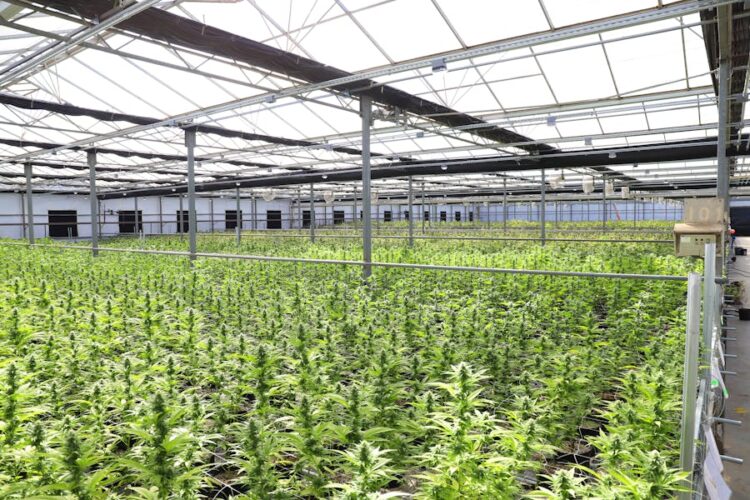California witnessed significant changes regarding cannabis laws in recent decades. Many residents associate the state with progressive policies related to cannabis legalization, regulation, and taxation. This article explains the evolution, current status, and impacts of cannabis legalization in California. It also reviews market statistics, local and state regulations, and how these laws affect consumers, businesses, and communities.
Is weed legal in California?
Yes, weed is legal in California for both medical and recreational use. Regulations ensure strict adherence to state laws regarding sales, possession limits, cultivation, and other aspects of cannabis consumption.
Historical Overview of Cannabis Legislation in California
California played a significant role in the early stages of legalizing cannabis in the United States. Medical cannabis became legal with the passage of Proposition 215 in 1996. This move provided patients and caregivers with access to cannabis for treatment purposes. The measure laid the groundwork for subsequent reforms. After decades of debate, California legalized recreational use in 2016 with Proposition 64, known as the Adult Use of Marijuana Act (AUMA).
The state’s policy evolved through multiple challenges, legal developments, and adjustments in regulatory frameworks. The legalization effort enjoyed widespread public support, supported by advocates, voters, and several policymakers. The journey involved refining laws to handle issues such as licensing, quality control, safety standards, and taxation.
Enforcement priorities shifted over time. Before complete legalization, law enforcement concentrated on major trafficking along with protecting communities from harmful substances. With legal provisions in place, resources reallocated to monitor compliance with emerging rules. The rapid policy changes transformed the legal landscape and business models across the state.
The historical evolution continues to inform current practices. Economic benefits emerged as tax revenues increased, and communities gained resources to support public services. Data indicates that substantial revenue from cannabis sales contributed to various public programs and initiatives. Several lawmakers and public safety officials reviewed and updated laws to match societal shifts and technological improvements in monitoring.
Regulatory Framework and Policy Details
State regulators created a layered structure for cannabis oversight. Licensing categories include cultivation, manufacturing, distribution, testing, and retail sales. Local jurisdictions retain authority over permitting retail sales and cultivation operations. This dual structure results in a mix of state and municipal regulations.
Cannabis is a controlled substance administered under a well-defined licensing and enforcement system. The Bureau of Cannabis Control (BCC) oversees licensing and ensures that businesses comply with applicable guidelines. The California Department of Public Health (CDPH) plays a role in enforcing product safety and testing standards. In addition, local authorities implement land-use policies to restrict or permit cannabis business activities in certain areas.
The following table provides a summary of the main regulatory bodies and their roles:
| Regulator | Primary Role |
|---|---|
| Bureau of Cannabis Control (BCC) | Oversees licensing and enforces state-level rules in the industry |
| California Department of Public Health (CDPH) | Manages product testing, quality control, and public health legislation |
| Local Municipalities | Administer local permits, zoning, and additional restrictions |
| California Department of Tax and Fee Administration (CDTFA) | Collects excise taxes on cannabis sales |
State regulators use the experience from older markets to update policies regularly. Public policy experts and economists review market performance data, tax revenue growth, and social impacts. The regulatory framework continues to mature, emphasizing transparency, player accountability, and effective resource allocation.
Current Legal Status and Market Overview
Today, California allows adults aged 21 and older to purchase, possess, and consume cannabis for recreational use. The law permits individuals to possess up to one ounce of cannabis and up to eight grams of concentrated cannabis product. Medical cannabis patients can access higher quantities and cultivate their medicine under personal use limits.
Major changes in legislation have allowed the state to create structured markets. Licensed businesses operate many retail and wholesale operations. The transformation led to the development of reimbursable licensing fees and taxes that support educational, regulatory, and community programs. Many municipalities have partnered with state agencies to monitor compliance and adjust local ordinances where necessary.
The state experienced rapid market growth. Business owners, operators, and investors demonstrate strong interest in the cannabis sector. Licensed establishments must adhere to strict testing criteria and packaging regulations. Compliance programs include testing for contaminants, labeling requirements, and limits on THC concentration to increase consumer safety. Market data revealed a steady rise in sales year-by-year.
The table below summarizes some key market data from recent years:
| Year | Total Cannabis Sales (in billions of USD) | Tax Revenue from Cannabis (in billions of USD) | Number of Licensed Retail Stores |
|---|---|---|---|
| 2018 | 3.2 | 0.4 | 800 |
| 2019 | 4.5 | 0.7 | 1,100 |
| 2020 | 5.9 | 0.9 | 1,400 |
| 2021 | 7.3 | 1.1 | 1,800 |
Market trends continue to evolve as more jurisdictions embrace cannabis commerce. Fiscal studies note that tax revenues contribute significantly to state funds. These funds support public health, education initiatives, and designated community reinvestment programs. Regulatory revisions remain under review as local government entities work to balance revenue potential with community safety.
Economic Impacts and Community Effects
The economic impact of cannabis legalization extends to many facets of public life in California. The market supports job creation at multiple levels, including cultivation, processing, distribution, and retail. City budgets benefit from robust tax revenues, and ancillary sectors also experience indirect advantages. Employment opportunities in agricultural, construction, and security services often increase as cannabis businesses expand.
Local governments reportedly allocate portions of revenue to education, community health, and rehabilitation programs. Economic impact studies consistently show positive benefits on small business development and entrepreneurship. Cannabis-related occupations contribute to lower unemployment rates in certain counties. Communities transform by leveraging new tax revenue streams and promoting business growth in regulated settings.
A secondary table provides community benefits derived from cannabis taxation and regulation:
| Category | Benefits Derived | Allocation Examples |
|---|---|---|
| Education | Increased funding for public schools and universities | Grants for curriculum enhancements, facility upgrades |
| Public Health | Resources for mental health and drug dependency programs | Expansion of outpatient services, community awareness campaigns |
| Community Investment | Financial support for neighborhoods affected by drug enforcement policies | Neighborhood improvement projects, local infrastructure upgrades |
| Job Creation | New employment opportunities across the supply chain | Training programs, local hiring initiatives |
Businesses weigh compliance costs produce economic advantages in several respects. Data collection on market performance allows state agencies to measure fiscal outputs and regulate responsibly. Local communities observe tangible benefits by reinvesting tax revenue in areas that need enhanced public designs and infrastructure.
Cannabis dispensaries must open under strict compliance reviews. Operators face rigorous inspections and must follow testing protocols for consumer safety. The state’s decision to include precise quality control mechanisms supports public trust in the regulated market. Enforcement authorities work with the business community to share best practices and maintain a high level of consumer confidence.
The emergence of a regulated cannabis market fosters ideas that extend to public safety, effective regulation, and community accountability. Business owners remain vigilant, while regulatory bodies ensure standardized practices and continuous updates based on new market developments.
Taxation and Revenue Allocation
Taxation emerged as a major component of the cannabis legalization effort. California levies various taxes on cannabis products including excise, cultivation, and sales taxes. Tax policies ensure that dispensaries account for all individuals handling the supply chain. The revenue derived from these taxes supplements public funds allocated to specific projects and community reinvestment programs. Transparency in tax collection provides residents with confidence in the regulatory process.
Laws direct a portion of tax revenue toward public health initiatives, environmental projects, and community outreach programs. Officials record ongoing revenue growth and allocate funds based on program performance reviews. Stakeholder meetings allow city officials to adjust funding in real-time as community needs arise.
The following table examines key tax statistics related to cannabis revenue in California:
| Tax Category | Tax Rate/Structure | Revenue Allocation |
|---|---|---|
| Excise Tax | 15% on retail sales | Public health initiatives, community programs |
| Cultivation Tax | Variable rates based on product types | Infrastructure development, regulatory enforcement |
| Sales Tax | As per local and state guidelines | Educational and emergency response programs |
Tax calculations support community projects and serve as benchmarks for regulating other legal substances. The documented report on cannabis tax revenue informs future decisions on rate adjustments and reinvestment strategies. Each fiscal year, local governments produce detailed reports that outline revenue collection and its subsequent usage.
Investment in cannabis technology and compliance infrastructure yields additional community benefits. The infusion of funds into regulatory systems enables local governments to increase oversight efficiency and public safety. The experience amassed in regulating cannabis markets proves invaluable as states observe California’s methods and adapt similar programs. This ongoing evaluation and adjustment ensure that regulation maintains effectiveness as market dynamics evolve.
Public Health and Safety Considerations
Cannabis legalization aligns with public health measures designed to safeguard consumers against poor-quality products. The state enforces rigorous testing required for contaminants, pesticides, and pathogens in cannabis products. Authorized laboratories facilitate analysis to ensure that products meet defined safety specifications. Strict packaging and labeling requirements help consumers identify product potency and usage instructions. Public officials use age limits and density restrictions on retail establishments to control distribution in high-traffic areas.
Cannabis education programs target both recreational users and medical patients. These initiatives explain proper dosing protocols, potential side effects, and interactions with other substances or medicines. Public health organizations conduct outreach efforts that discuss safe consumption practices for both first-time and experienced users.
Multiple studies monitor trends in cannabis use patterns and associated public health outcomes. Authorities compare pre-legalization data to current findings. Key indicators include emergency room visits, treatment admissions related to cannabis abuse, and consumer satisfaction measures. Detailed reports help public health professionals design appropriate educational programs and treatment options. Regular surveys identify vulnerable groups and assess the need for tailored interventions.
County health departments collaborate with the state on public safety campaigns. The campaigns detail legal possession limits, discourage retail transactions outside licensed stores, and educate on safe handling practices. In communities with intensive regulatory oversight, organized meetings discuss consumer feedback and improvement strategies. This routine exchange of information among stakeholders fosters informed decisions and helps reduce misuse without alienating users who follow the guidelines.
Impact on Law Enforcement and Judicial Proceedings
Law enforcement agencies reallocated resources after cannabis legalization shifted priorities. Police and prosecutors now focus on regulatory compliance along with controlled substance trafficking. The transition enabled many enforcement agencies to reduce arrests and jail sentences for cannabis-related offenses, benefiting community relations.
Judicial proceedings witnessed a decline in cannabis-specific charges. Numerous cases previously categorized under significant possession laws became subject to civil penalties and administrative procedures. Specialized units frequently collaborate with regulatory authorities to identify violations in licensed operations. Law enforcement training programs focus on distinguishing between legal activity and substantial regulatory breaches. These efforts contribute to a balanced judicial system and help maintain public trust.
Efforts to expunge prior convictions for cannabis-related offenses received legislative support as lawmakers and community advocates recognized the harm of outdated criminal records. Several programs provide safe and streamlined paths for individuals convicted under former laws. Data indicates a measurable improvement in social reintegration outcomes due to judicial reforms. The review and revision of records help many citizens make progress in education, employment, and family life.
Police department reports show a decrease in cannabis-related incident rates after legalization. Detailed statistics reveal that focus now remains on ensuring consumers and businesses adhere to regulations. Compared to previous years, resources shift toward regulatory inspections and compliance checks rather than arrest and prosecution. The experience from these measures informs broader policy debates on controlled substances within the state.
The administration of laws and related judicial strategies remain under regular review by state officials. Feedback from law enforcement guides future reforms and adjustments. This iterative process helps match legal frameworks to modern governance and societal needs. Ongoing research by academic institutions provides additional insights into these trends.
Business and Investment Considerations
Entrepreneurs and investors show considerable interest in establishing ventures in the legal cannabis market. Federal uncertainties remain, but California has built a robust system for commerce. Markets continue growing, according to periodic economic reviews. Investors acknowledge that potential benefits must account for high compliance costs, rigorous standards, and evolving state regulations.
Startups often access detailed business resources provided by both local chambers of commerce and regulatory authorities. These organizations assist business owners in understanding licensing processes, inventory tracking, and connection to supply chains. Public seminars address best practices and policy updates and connect investors with experienced industry professionals. In addition, financial institutions now offer specialized services tailored to cannabis businesses despite federal prohibitions.
The growth of ancillary businesses further stimulates economic expansion. Technology solutions focus on ensuring regulatory compliance, secure transactions, and efficient inventory management. Security services, delivery logistics, and quality assurance companies serve supporting roles. The creation of a tightly knit network among primary cannabis providers and supporting sectors drives improved market performance and heightened compliance.
Innovative research evaluates the interplay between business growth and consumer protection. Feedback from registrants, compliance officers, and end consumers continuously informs operational improvements. Market analysts compare California’s performance with other states, highlighting area-specific policies and successful business approaches.
The following table compares market indicators of cannabis business activities in California relative to two other states that legalized cannabis around the same period:
| Indicator | California | Colorado | Washington |
|---|---|---|---|
| Total Annual Cannabis Sales (USD) | 7.3 billion+ | 4.0 billion | 3.5 billion |
| Number of Licensed Retail Stores | 1,800+ | 900+ | 600+ |
| Annual Tax Revenue from Cannabis | 1.1 billion+ | 0.8 billion | 0.7 billion |
| Employment in Cannabis Industry | 40,000+ jobs | 25,000+ jobs | 20,000+ jobs |
California’s business strategies emphasize regulatory diligence and product reliability. The market remains competitive as companies invest in technology, marketing, and consumer research. Economic analysts monitor evolving trends to guide investment decisions and forecast market stability.
Consumer Perspectives and Social Implications
Consumers experience a range of benefits from a regulated cannabis market. Safety, quality assurance, and product consistency provide a reliable consumer experience. Safety protocols ensure that products reach consumers without contamination and with accurate potency labeling. Changes in legislation allow consumers to benefit from diversified product options and improved educational resources on consumption methods.
Cannabis retailers also support community outreach through educational workshops on responsible consumption. Information sessions occur regularly in local communities, addressing how to access legal markets, read product labels, and understand dosage levels. The openness in communication builds consumer trust and fosters satisfaction with legal products.
The social narrative surrounding cannabis has shifted dramatically over the years. Once stigmatized, cannabis now occupies a legal and socially accepted position. Changes in public opinion accompany refined legislation framed by facts and research. Statistically, surveys indicate that many Californians support legalization due to its benefits regarding safety, economic opportunity, and social justice. Many communities witness improved perceptions of regulated operations and community reinvestment strategies.
Consumer surveys reveal positive attitudes toward legal cannabis. Studies indicate that both medical and recreational users favor regulated systems that promote transparency, product safety, and accountability. Academic research helps quantify consumer insights, contributing to the refinement and development of policy. The evolving consumer landscape reflects in improved product offerings, advanced testing protocols, and ongoing dialogue between regulators and consumers.
Local community meetings assist in addressing concerns surrounding the legal cannabis market. Moderated sessions allow residents to voice opinions and propose initiatives. These platforms provide valuable feedback to lawmakers reviewing policies and adjust regulations. Survey data collected via community questionnaires document changes in community satisfaction and overall public perception.
Impact on Agriculture and Sustainable Practices
Cannabis cultivation drives agricultural innovation in California. Regulations outline sustainable practices that minimize environmental impact. Licensed cultivators increasingly adopt energy-efficient methods, waste reduction protocols, and integrated pest management techniques. Strict water usage policies encourage cultivators to plan appropriate irrigation systems while minimizing excess consumption. Advanced techniques improve energy efficiency, often integrating organic practices that protect soil quality and water sanitation.
Research agencies conduct studies on the environmental impacts of seeded cannabis crops compared to traditionally cultivated crops. Data reveal that cannabis growers successfully adapt practices that mitigate heavy water requirements and reduce reliance on chemical pesticides. Environmental watchdog organizations collaborate with the state to verify that sustainable practices maintain integrity and minimize rework in agriculture.
Local agricultural extension services provide expertise on innovative cultivation practices tailored to cannabis. Industry workshops assist cultivators in aligning best practices with state codes. Collaborative programs between researchers and cannabis cultivators confirm that environmental standards improve over successive harvests. Certification programs also recognize sustainable practices and drive marketing benefits for certified growers.
The following table summarizes some metrics regarding sustainable practices in cannabis cultivation:
| Sustainable Metric | Improvement Seen (Post-Legalization) | Practice Implementation Examples |
|---|---|---|
| Water Efficiency | Up to 25% reduction in water use | Drip irrigation, reclaimed water technology |
| Organic Pesticide Use | Increased use in certified organic farms | Adoption of biocontrol agents, integrated pest management |
| Energy Consumption | 15% improvement via renewable energy sources | Use of solar panels, LED grow lights |
| Waste Management | Enhanced recycling programs in large facilities | Composting plant waste, recycling packaging |
Cannabis cultivation blends traditional agricultural practices with modern environmental safety methods. This mix presents opportunities for organic certification and market branding that emphasizes sustainability. Consumers increasingly value transparency in production practices that reflect commitment to environmental responsibility. Regulatory agencies encourage further research and development of industry-wide ecological standards that benefit California’s diverse agricultural sector.
Challenges and Future Directions
The regulated cannabis market in California continues to adjust as new challenges appear. Evolving state regulations and federal perspectives require constant coordination among industry stakeholders. Discrepancies between federal and state policies persist, presenting difficulties for banking, taxation, and interstate commerce. Industry players navigate these issues while remaining compliant with local laws and updating operational practices.
Operational challenges persist in the form of supply chain logistics. A well-documented struggle involves transporting products between licensed cultivation centers, distribution hubs, and retail outlets. Authorities seek to improve tracking systems to guarantee accountability and traceability of cannabis products. Ongoing developments in blockchain technology and digital tracking facilitate accurate record-keeping and faster verification processes. Developers and state agencies collaborate on innovative solutions to address these gaps.
Issues with local disparities also present obstacles. Some counties maintain bans or severe limitations posed on retail and cultivation licenses. These restrictions lead to concentrated markets where competition increases and illegal markets sometimes develop. Ongoing discussions among state policymakers and local officials highlight the need for equity programs that provide opportunities to communities historically affected by prohibition-era policies.
Investment in research and technology may support future growth. Advancements in artificial intelligence assist regulators in tracking market trends, consumer behavior, and compliance irregularities. Data-driven insights offer policymakers ways to adjust licensing procedures, streamline inspections, and adopt more robust enforcement practices. State agencies plan to integrate more comprehensive digital records and ongoing performance reviews to keep pace with market developments.
Future directions include emerging product types such as edibles, concentrates, and topical products. Evolved testing standards accompany these fields with new protocols that monitor various consumption forms. Researchers produce consistent studies to validate product safety and explore potential health benefits. Consumer education remains a priority, ensuring that product labels accurately reflect ingredient concentrations and potential effects.
A growing body of research evaluates the public health impacts of long-term cannabis consumption. Data compiled from hospital reports, academic studies, and consumer surveys influence decisions on allowed concentrations and usage guidelines. Agencies conduct periodic safety reviews and update best practices in testing protocols. Initiatives intend to increase transparency and involve relevant stakeholders in crafting balanced approaches.
Literature also examines the impact of legal cannabis on neighboring states. Comparative studies identify best practices and key indicators of success drawn from multiple legal markets. These studies encourage cooperative research that informs policy revisions and adapts regulatory models to fit emerging trends. Active dialogues between states contribute to uniform practices that protect consumers while enabling a fair competitive market.
A detailed analysis of economic impact forecasts continued revenue growth through further legalization efforts. Projections suggest that increased market stabilization may lead to more employment opportunities and enhanced contributions to state funds. Long-term research converges on potential improvements in public safety outcomes and regulated consumption models. Collaborative efforts among industry groups, state agencies, and academic institutions help chart the path forward.
Conclusion
California establishes one of the nation’s most prominent regulated cannabis markets. This article outlines the evolution of cannabis legalization, the regulatory frameworks that underpin the market, and the economic, public health, and social impacts observed over the years. Detailed market data and environmental statistics help contextualize regulatory achievements and the ongoing challenges that stakeholders face. Legal cannabis provides significant employment opportunities, additional tax revenue, and community investment benefits, while also emphasizing consumer safety through robust product testing and quality control measures.
Local authorities continue to assess public opinions and adjust policies. Businesses remain committed to compliance even as they explore innovative ways to meet consumer demands. Meanwhile, regulatory bodies and law enforcement agencies work together to ensure that the system remains fair and transparent. Despite ongoing challenges such as supply chain issues and federal inconsistencies, California’s experience remains a key reference for other states that consider regulated cannabis markets.
The state’s approach to cannabis legalization marries economic opportunities with crucial public safety and community benefits. Detailed records on market performance, improved regulatory practices, and community reinvestment contribute to a comprehensive governance model. Lessons gleaned from California continue to serve as research examples to policymakers and industry participants nationwide, establishing established guidelines for transparent market practices, economic growth, and consumer protection.
As public opinion shifts further and the industry matures, the future for legal cannabis in California appears stable. Ongoing investment in technology, research, and community programs ensures that the market adapts to meet evolving demands. Continuous regulatory updates, based on reliable data and informed public feedback, illustrate a commitment to balanced governance. Responsible oversight and systematic planning enable California to foster a regulated environment where business operations, community interests, and consumer safety align harmoniously.
By understanding the dynamics of cannabis regulation, stakeholders enhance their appreciation of how determined governance models can support growth. Data-backed reports reveal the depth of economic contributions made by the industry and the tangible benefits realized by communities across the state. Regulatory evolution, coupled with improved enforcement standards, reinforces consumer trust and establishes California as a leading example of how carefully managed policy frameworks can guide the transformation of once controversial markets.
This extensive overview provides insights into why the question, “is weed legal in California?” receives an affirmative answer and highlights the operational, economic, and social dimensions that shape the industry. Insights included in this report support an informed electorate and offer guidance for potential entrepreneurs and policymakers. As the legal landscape continues to recalibrate, ongoing research and adjustment will remain essential to deliver balanced outcomes that match community expectations and ensure regulatory coherence.
In light of these detailed observations, the legal cannabis market in California demonstrates a robust model for regulated commerce. With clearly defined licensing processes, comprehensive consumer safety programs, and sustainable agricultural practices, the state has constructed an environment where cannabis legalization contributes meaningfully to modern public policy, community welfare, and integrated economic development. Stakeholders continue to refine practices based on empirical evidence and ongoing feedback, ensuring that the landscape remains dynamic and responsive to emerging challenges.
Ultimately, California’s regulatory model offers an informative case study for other regions exploring cannabis legalization. The challenges faced during the transition led to innovative policy solutions and structured economic strategies that underpin a thriving, transparent market. Stakeholders benefit from data-driven insights and collaborative governance that address both industry aspirations and community interests. This model, adapted over years of active research and public participation, serves as a resource for future policy design and market regulation both nationally and internationally.
The comprehensive progress detailed above strengthens the credibility and reliability of California’s approach. Recent developments, combined with an emphasis on efficiency and consumer protection, set a standard for regulatory practices. As advancements in technology, agricultural methods, and market research further refine the industry, California remains at the forefront of establishing practical, well-regulated, and mutually beneficial cannabis policies.










